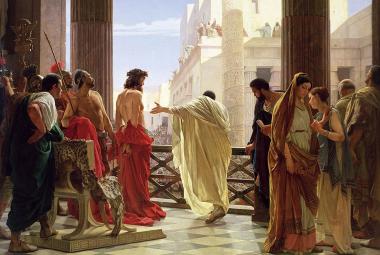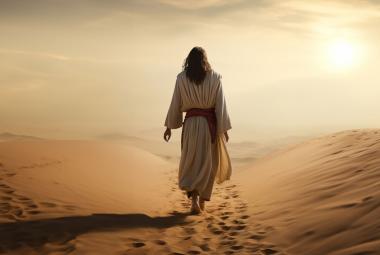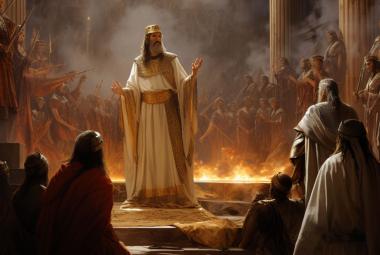One cannot really comprehend what is going on in Revelation Chapter 5 unless one understands the events involved in the Book of Ruth in the Old Testament.
This tiny four-chapter romance has been venerated in college classes for its elegance as literature, but it also reveals a craftsmanship of prophetic anticipation unrivaled anywhere in Scripture. (Our commentary on this book endures as one of our most popular publications.) One cannot really comprehend what is going on in Revelation Chapter 5 unless one understands the events involved in the book of Ruth in the Old Testament.
The story involves a hero, Boaz, who is in the role of a goel, or Kinsman-redeemer, whose ultimate commitment of redemption returns the land in Bethlehem to its disenfranchised former owner, Naomi, and who also takes a Gentile bride, Ruth.
To follow the plot, one must understand the Law of Redemption. In ancient Israel, land wasn’t sold in fee simple,1 as we are used to. Since God was the real landowner, Israel was simply a tenant under conditions of obedience. When land was “sold,” what the buyer received was only the use of the land, not clear title. There were conditions under which a kinsman of the seller could “redeem” the land back to the original family. These conditions were typically noted on the outside of the scroll defining the transaction.2
The scroll in Revelation Chapter 5 was written “within and on the backside,” which identifies it as a deed subject to redemption. A Kinsman of Adam, in His role as a goel, a Kinsman-redeemer, is taking possession of what He had already purchased with His blood as the sacrificial Lamb. He not only purchased the land; he also purchased a Bride.
In the Book of Ruth, Naomi is in the role of Israel, exiled from her land; Boaz is her kinsman, who performs the redemption of the land; and Ruth (a Gentile) is also purchased for a wife.3
This “macrocode” extends to virtually every detail of the book. It is interesting that Ruth is introduced to Boaz through an unnamed servant (functioning as the Holy Spirit). The Church, as the Gentile “Bride of Christ,” is introduced to the ultimate Kinsman-redeemer by the Holy Spirit also.
It is interesting that Ruth learns how to deal with this situation from Naomi. We learn of God’s plan of redemption through His dealings with Israel. It is also provocative that, in the story, Naomi learns of Boaz through Ruth. (The implication of that subtlety is left to the diligent.)
The exposition of the almost-inexhaustible “coding” aspects of this tiny book exceeds the space available here.4 It is also interesting that this pivotal book is also associated with the Feast of Shavuot, the Feast of Pentecost.5 Coincidence? Hardly.
Notes:
- A fee simple estate of inheritance is one which devolves to the owner’s heirs and assigns forever without limitation.
- An example of this was when Jeremiah, despite the impending Babylonian captivity, was instructed to purchase land from the son of his uncle Hanameel. He, of course, would never benefit from this purchase. The deed was secreted in an earthen jar in anticipation when his heirs would return after the captivity and claim it (Jeremiah 32:6-15).
- In addition to the Law of Redemption (Leviticus 25:47-50), one must understand the Law of Levirate Marriage (Deuteronomy 25:5-10).
- See The Romance of Redemption – Gleanings from the Book of Ruth, from this publisher.
- See our Briefing Pack, The Feasts of Israel, for the prophetic implications of each of the seven feasts of the Torah.






